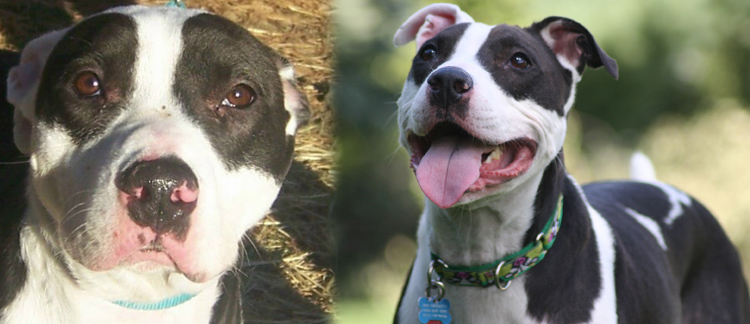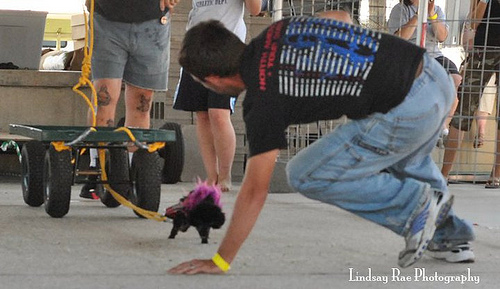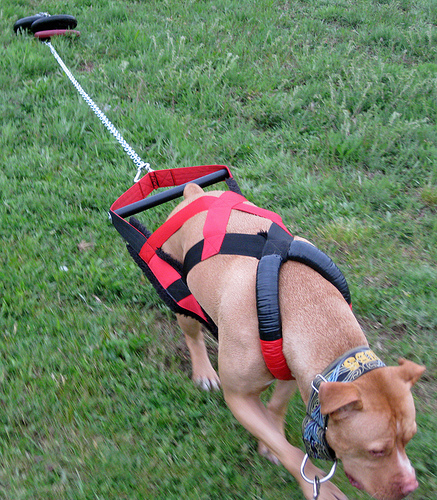* The two week shut down is geared to teen to adult dogs . Puppies do need a bonding time with their new humans, a whelping period so to speak, but they have a different requirements than a more aged dog . It is important to fully vaccinate and de-worm your puppy before venturing out into the world. I suggest strongly getting your new puppy to a veterinarian for proper de-worming and vaccinations. But note the shut down period is not recommended for young puppies as they have crucial needs that are special than older dogs in proper development and socialization.
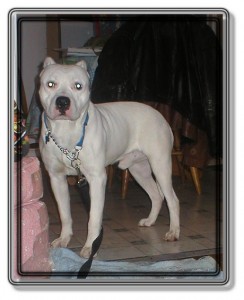
Kosmo Starting Shut Down
The Action:
- “I have a new dog!”
- “I introduced her to 15 people”
- “He was a bit leery but seems to like my other 3 dogs”
- “She went everywhere with me ” …
All in the first few days of the new home….. (!!!)
The Reaction:
In about two weeks later we get the call back to the rescue;
- “I think we will have to rehome the new dog.”
- “The new dog barked and nipped at my kid”
- “We had a dog fight”
- “What do we do?”
Ok, folks, here it comes, the big secret to many foster homes success with a new dog that came from unknown or even not so good homes!
Doggy shut down! A “get to know you “ time! Giving the new dog, post finding, adoption, buying, etc, time to adjust to you and your family and the dogs in the new environment.
Why The Two Week Shut Down?
The Two Week Shut Down is a time familiar to a dog’s mind, as it mimics the whelping box when first born, as the puppy’s eyes are not open and it relies totally on the mother’s ability to take care of it. By smelling, sensing, listening the puppy starts his journey into the new scary world.
New adult dogs come into our home the same way, “a journey into a new and scary world”
By giving the dog a “time out” the dog can learn its new world, its new people and begin to relax and blossom under the care of the new care giver.
Why we all want to run out with our new dog, show everyone our new pet, we forget that even an adult dog is now back to a puppy newborn like mind, all is new, the voices speak a new language, cars might be new, leashes and handling under nice people might be new.
Even petting and acceptance of a pet is stressful on a new dog,. “Who are you? Where did we come from? Where are we going? What is expected of me?” –the dog thinks!
Just like a new born baby we wouldn’t rush out and pass the baby from person to person, we set up a stable and save environment, our new dogs are just like that , our newborn baby.
Step back for a minute, and think how you might feel if you were never going to go back to your “home” and that you were expected to live with new people who didn’t understand your language. What if these new people took you to all sorts of different places expecting you to greet everyone happily and feel comfortable with an overload of attention all at one time? How might you feel after all of that, to have to go to your new “home” and interact with a bunch of strangers? It’s very likely that you’d feel exhausted, overwhelmed, and wanting to retreat, but really have no place to go to. You might begin to act out at people for pushing you into these situations and insisting that you do this and do that.
Well, many dogs are put in the very same position and the only way they know how to get their point across is to act out or “misbehave.” The dog may act out by nipping at children for he didn’t understand them and was corrected harshly before knowing how he was to be around them! Growling, like when being moved off furniture –“ he didn’t know he couldn’t be here. What is expected ? Where am I allowed ?” Starting fights with the other animals in home – it may feel that the new humans are not leaders or beings to look up to for help in decisions , The dog begins to think “I must defend myself!” “Who IS this new dog?”
How To Do The TWO WEEKS – “shut down”
For the first two weeks, (sometimes even longer) a dog takes in the new environment, who is the top persons, dogs, who ARE these people!
A great way of thinking of this time is; “this is the dating period NOT the honeymoon”
When you first met your “mate”, you were on your best behavior, you were not relaxed enough to be all of yourself, were you?
Just think of the things you do physically once you get to KNOW a person, you wouldn’t run up to a stranger and hug them and squeeze them!
Imagine, if on the first date, this new person, was all over you touching you and having their friends hug you and pat you on top of the head, and jostle your shoulders, then he whisked you off to another stranger’s home and hey did the same thing.
Would you think this person normal and SAFE?
Would you feel invaded and defensive and begin to get a bit snarky yourself?
Wouldn’t you think to push these people away for obviously your date is out of their mind and they aren’t going to save you from these wierdos!!
Yet we do this to our dogs, and then get upset or worried that they aren’t relaxed and accepting of EVERYTHING instantly!
*Why do we expect a dog to accept a situation when we ourselves could not?
By shutting down the dog, it gives the dog TIME to see you, meet YOU, hear and take in the new sounds and smells of your home.
- Crate or keep the dog in a room by itself if possible.
(Believe me, dogs are sensory animals, they know more than you think without seeing it
This allows the dog to take in the new world and not feel assaulted at the world coming AT him visually).
- Leash (so I don’t have to correct it ..I don’t have that right yet!) This also teaches the new safe zone for the dog is around you and the humans in the home. Leash the dog right to your belt or under a piece of furniture.
- No obedience like training at all, just fun exercise and maybe throw some toys for fun, leash the dog if you don’t have a fence outside. But I DO NOT leave my yard, AT ALL in this time.
- No car rides, no other dogs, (unless crated beside them), no pet stores, no WALKS even, nothing but me, my home, my yard. (Unless of course the dog needs to go to the veterinarian.)
- Don’t go crazy petting and handling the dog! Even petting and being “out” in the home puts pressure on a dog, as everything is so new.
Allowing the dog time to absorb and the decision to come to YOU for pets and affection can do a lot in taking pressure off a new dog.
- Exercise – but in your yard! All dogs need to burn off energy. Do fun toss the ball games in your yard or on a lunge line if no fence. Remember to just have fun, let the dog run and explore . Exercise is a great stress relief so we don’t want to add stress to what is an out of energy.
- Again- no walks yet! Walks are stressful for there is so much coming at you. Being a new person to this dog you have no clue how the dog is reacting to the walking environment. The dog may react to something and we start correcting it with the leash and we just installed a VERY STRESSFUL moment to the dog in what should be a fun and happy walk.
TEACH the dog by doing the shut down, that YOU are the one to look to, that you are now here for the dog! He can trust in you and look to you as its new leader!!
Then on walks you will see the dog look to you when he sees something like a kid or a dog to see what your reaction is, lessening his mind about having to defend or control the environment, he has YOU , the dog now can relax and enjoy the walk more.
*In the house I have the dog out only for about 20-40 minutes post exercise/yard times. And ALWAYS on a leash. Then PUT THE DOG AWAY. Let it absorb and think. Even if just for a little bit.
A few minutes of “down time” allows the dog to overcome things that we may not of seen triggered anxiety or fear in the dogs mind, and allows the mind to be fresh for more “new” and adventures in your home and life.
If the dog goes to his crate on his own, he is telling you “I need a time out” allow him this time.
By having the dog out for long periods of time we are forcing the dog to keep accepting all new things , by putting the dog away we are asking him to accept a few things, then go think and absorb, when we get him out later we introduce a few more things, so the three new things are three new things, not 3 x 3 x 3 – possible shut down from the dog.
- No new buddies ! Do not introduce the dogs for these two weeks, they can be side by side in the crates, (not nose to nose for they can feel defensive). Some dogs will bond instantly with the other dogs if we don’t bond FIRST with the dog, and this can lead to some other issues, as the dog will look to the other dog(s) for guidance and not YOU! A good way to meet dogs POST the two weeks is each dog have a handler and go for short walks ON LEASH. Walking helps relieve stress and worry. Each having their own human gives control to the moment. Do not allow them to be close enough to touch. But near each other, side by side if possible. Then later in home and again, use LEASHES! The easiest way and calmest way to control a dogs movement!
- Ignore Bad behavior – Ignore crying and/or barking. If you run to the dog each time they bark, whine, or cry, you are teaching the dog that doing those things gets your attention. The dog must learn to be secure when you are not there. Use the leash to softly correct jumping, exploring counters, etc. Most dogs I have taken in will “cry” in their crate/room for about 2-3 days. Its just their way of stressing . Its hard, but let them cry it out. If we go to them each time they cry/whine or bark we might be setting up for separation like behaviors. We want our new dog to be able to be “alone” and still know its SAFE.
- Praise Gently Good behavior – ex. Dog is sitting nicely next to you, touch or softly pet the dog “good boy/girl” let then know you appreciate GOOD behavior. This makes naughty behavior not so fun if you ignore THAT but praise the good!
Literally in two weeks you will see a change in the dog and begin to see its honest and true personality. Just like a house guest.. They are well behaved and literally shut down themselves these first few weeks, then post this time, they relax and the true personality begins to shine thru!
So, please, if nothing else for your new dog, give it the time to LEARN YOU as you are learning who they are!
This method works on shy dogs, confident dogs, abuse cases, chained dogs that come in, rowdy dogs, all temperaments! And it works on all breeds from little dogs to big bully dogs.
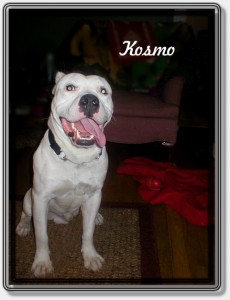
Kosmo Post Shut Down
Amazing, isn’t it?
Article originally published on Pitbull Forum by Luvnstuff/Stacie Sparks Vredeveld who is a volunteer for Pound Buddies in Muskegon, Michigan.
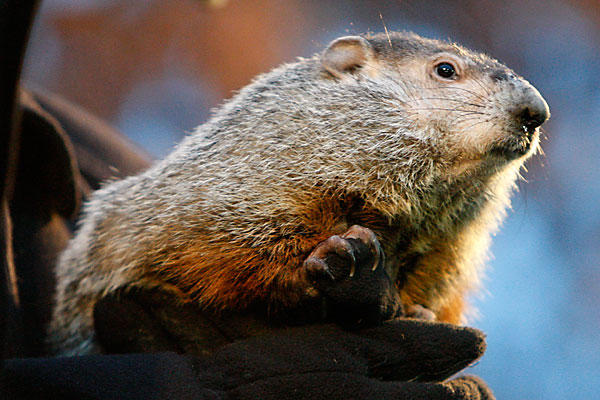 Winter is dragging on and on…and on. It seems that our winter-predicting groundhog friend, Punxsutawney Phil, has said another six weeks of this cold, nasty weather that has held the dogs pretty much hostage in the house other than trips to indoor venues and the occasional winter event – like the snow pulls we’ve attended. The dogs are going stir crazy and all that pent up energy has expressed itself in a few inappropriate actions too since they’ve started to nitpick and nag at each other more than usual. It’s getting rather old but we thankfully have a few options to exercise not only their minds but their bodies as well – the treadmill.
Winter is dragging on and on…and on. It seems that our winter-predicting groundhog friend, Punxsutawney Phil, has said another six weeks of this cold, nasty weather that has held the dogs pretty much hostage in the house other than trips to indoor venues and the occasional winter event – like the snow pulls we’ve attended. The dogs are going stir crazy and all that pent up energy has expressed itself in a few inappropriate actions too since they’ve started to nitpick and nag at each other more than usual. It’s getting rather old but we thankfully have a few options to exercise not only their minds but their bodies as well – the treadmill.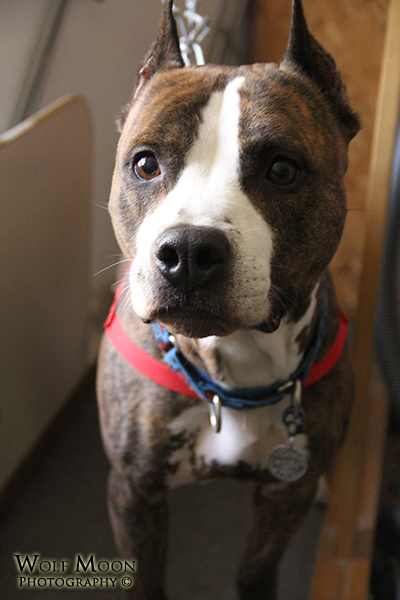 their canine companions, finding these types of exercise equipment available is becoming more and more readily available. Years ago, when I first got into the APBT as a breed enthusiast, having a dog-powered treadmill and the use was often linked by everyday pet owners as a sign of dog fighting. Thankfully, this is no longer the case and much of the so-called dog fighting propaganda is being realized to be useful for all breeds and types of dogs.
their canine companions, finding these types of exercise equipment available is becoming more and more readily available. Years ago, when I first got into the APBT as a breed enthusiast, having a dog-powered treadmill and the use was often linked by everyday pet owners as a sign of dog fighting. Thankfully, this is no longer the case and much of the so-called dog fighting propaganda is being realized to be useful for all breeds and types of dogs.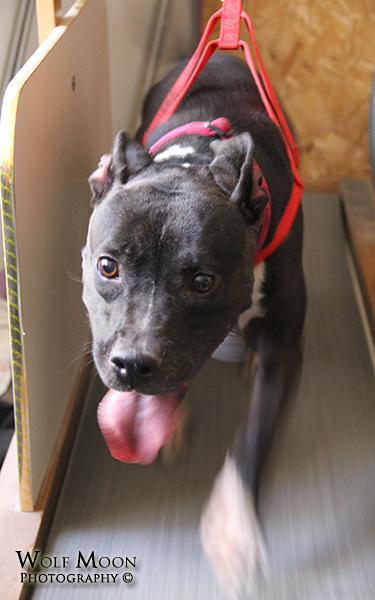 In the case of electric-type treadmills, many people convert humane-designed treadmills for the use with their canine companions but there are other options available which are geared in size and type toward canine companions. They are free-spinning like the slat-type treadmill and will typically allow for a more lean muscle-type to be created. For many people, this is the easiest option because you can find inexpensive electric treadmills (often called e-mills) on places like Craigslist for next to nothing. The only down fall, in my opinion, is that you have to watch and gauge when your dog has had enough and for many dogs that can be a pain since they don’t want to admit to being tired!
In the case of electric-type treadmills, many people convert humane-designed treadmills for the use with their canine companions but there are other options available which are geared in size and type toward canine companions. They are free-spinning like the slat-type treadmill and will typically allow for a more lean muscle-type to be created. For many people, this is the easiest option because you can find inexpensive electric treadmills (often called e-mills) on places like Craigslist for next to nothing. The only down fall, in my opinion, is that you have to watch and gauge when your dog has had enough and for many dogs that can be a pain since they don’t want to admit to being tired!
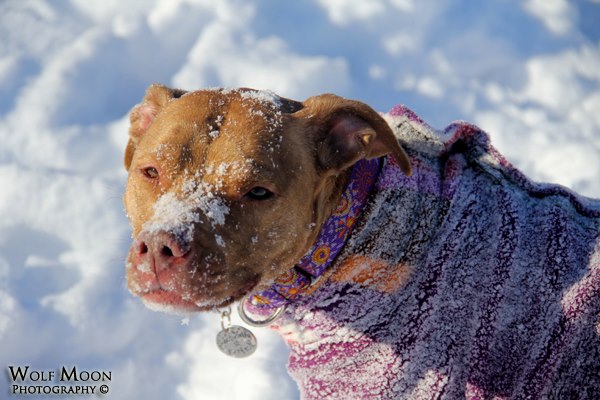
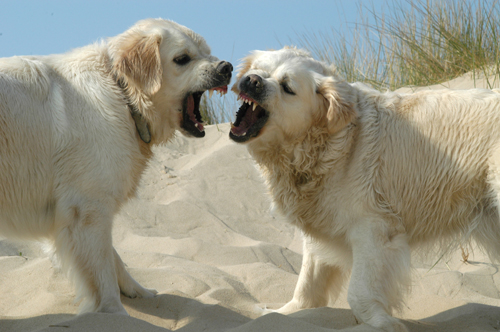 Dog aggression and reactivity is a reality facing many of today’s dogs. It’s not pretty. It’s not fun to deal with. It can be downright dangerous in the hands of someone unable to handle the situation. The worst thing of all? It’s a common trait in many dogs and many breeds, especially in the breed that I love and cherish – the American Pit Bull Terrier. Many people want to sugar coat it, deny it and avoid talking about it like the plague however, burying one’s head in the sand doesn’t do the dogs who have this trait any justice. They aren’t bad dogs. They just don’t necessarily want or need other doggie friends.
Dog aggression and reactivity is a reality facing many of today’s dogs. It’s not pretty. It’s not fun to deal with. It can be downright dangerous in the hands of someone unable to handle the situation. The worst thing of all? It’s a common trait in many dogs and many breeds, especially in the breed that I love and cherish – the American Pit Bull Terrier. Many people want to sugar coat it, deny it and avoid talking about it like the plague however, burying one’s head in the sand doesn’t do the dogs who have this trait any justice. They aren’t bad dogs. They just don’t necessarily want or need other doggie friends.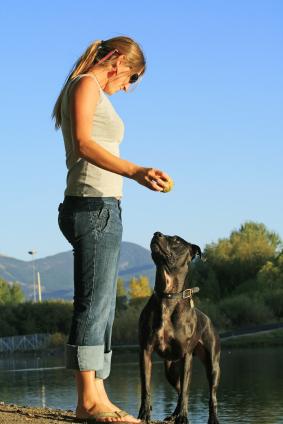 originally posted by
originally posted by 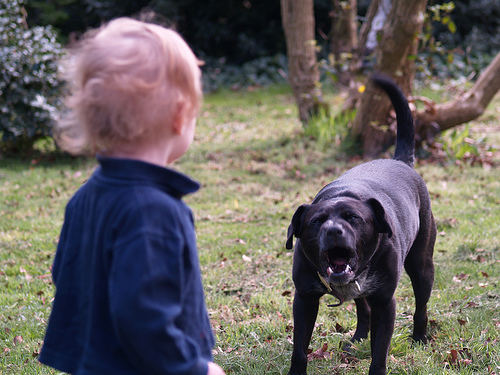 That being said, dog reactivity/aggression should not by any means to be confused with human aggression. Human aggression is one of the worse offenses dog kind can commit because it brings into play human laws and human emotions and will often lead to the ultimate solution – euthanasia. I, personally, do not tolerate this type of action from a dog. If a dog shows serious injury causing aggression toward a person (adult or child), then there is only one fate in my book. With so many stable-minded dogs of all breeds available, one who harms a human being should not exist in this world because the risks associated with it do no one any good – least of all the dog or person involved in such a vicious attack.
That being said, dog reactivity/aggression should not by any means to be confused with human aggression. Human aggression is one of the worse offenses dog kind can commit because it brings into play human laws and human emotions and will often lead to the ultimate solution – euthanasia. I, personally, do not tolerate this type of action from a dog. If a dog shows serious injury causing aggression toward a person (adult or child), then there is only one fate in my book. With so many stable-minded dogs of all breeds available, one who harms a human being should not exist in this world because the risks associated with it do no one any good – least of all the dog or person involved in such a vicious attack.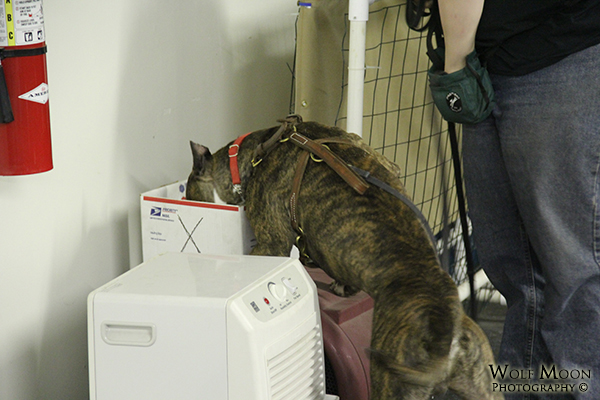


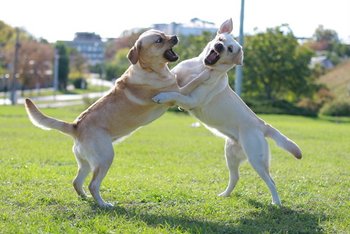
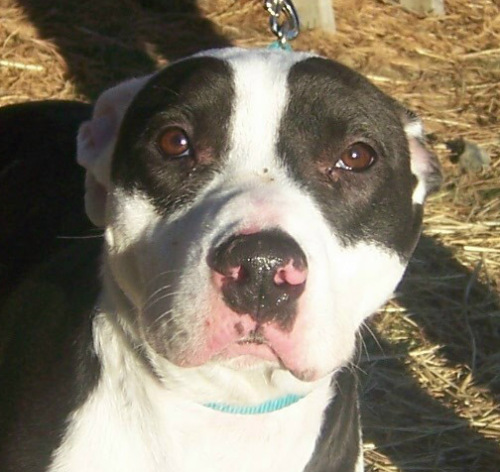
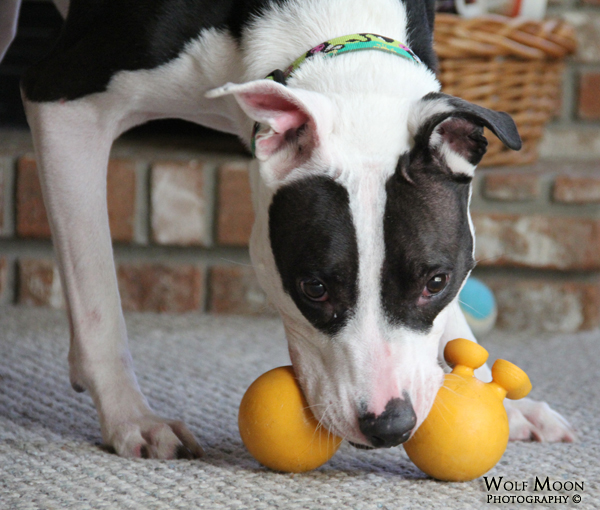 Here’s to many more adventures, buddy.
Here’s to many more adventures, buddy.